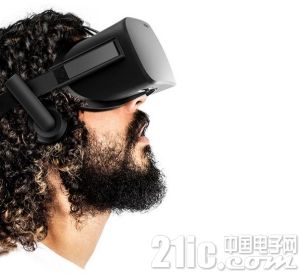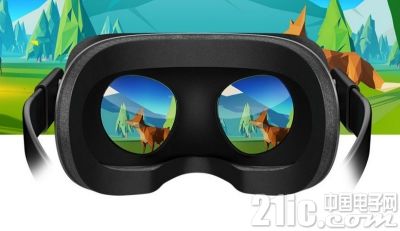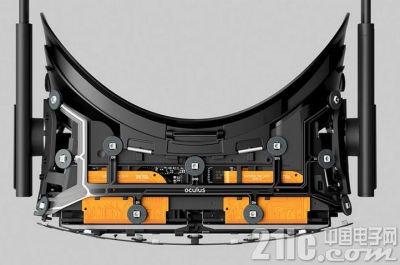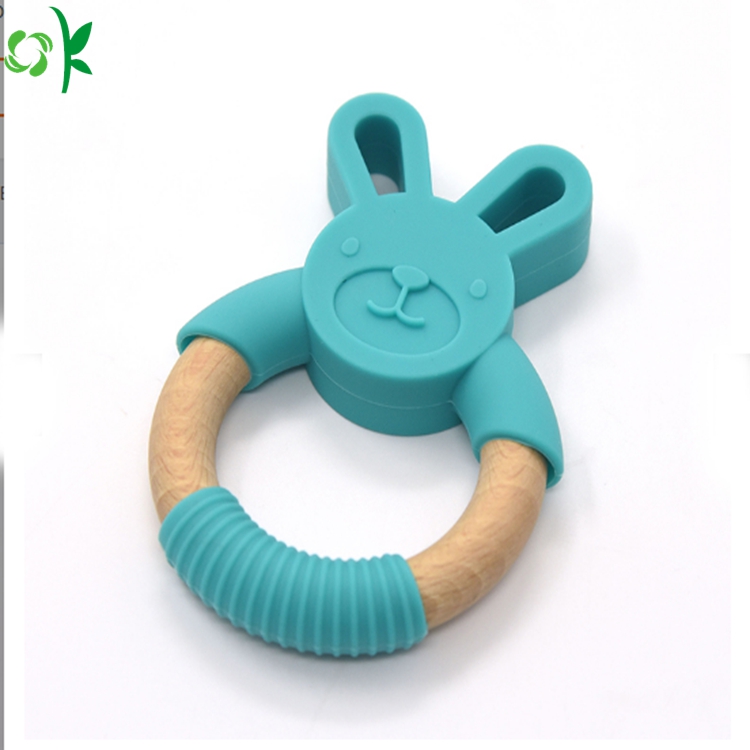After two years of prototype development and testing, Oculus finally presented their Oculus Rift consumer virtual reality (VR) helmet (Consumer Version 1, CV1) for the first time on Thursday. The Oculus Rift is a display used in the virtual reality field that covers the entire field of view of the wearer and is currently used primarily in video games. The Oculus Rift CV1 is still very lightweight, offering 360-degree VR sound, adjustable tilt, and a wider field of view and a more reliable head tracking system than the second-generation developer version.
This article refers to the address: http://
Last year, Facebook bought Oculus for $2 billion. Many people have known the company and the Oculus Rift product, and have made virtual reality (VR) technology a new hotspot in the technology industry.
In fact, virtual reality is not a new technology, but under the attention of technology giants such as Facebook, it is renewing its life. Later this year, in the second half of next year, Sony and other companies will also release or sell virtual reality helmets. Some insiders pointed out that 2016 will be the "first year of virtual reality." Companies such as Samsung, HTC, Google, Sony, and Microsoft will also launch new competitions on another computing platform behind smartphones.

What is virtual reality (VR)?
Virtual Reality (VR), also known as VR technology VR, also known as Vision Technology or Artificial Environment, is a virtual world that uses computer simulation to generate a three-dimensional space, providing users with simulations of visual, auditory, tactile and other senses, allowing users to behave like a person. In general, it is possible to observe things in the three-dimensional space in a timely and unrestricted manner. When the user moves the position, the computer can perform complex calculations immediately, and the accurate 3D world video is transmitted back to produce a sense of presence. The technology integrates the latest developments in computer graphics, computer simulation, artificial intelligence, sensing, display and network parallel processing. It is a high-tech simulation system generated by computer technology.
From a technical point of view, the virtual reality system has three basic characteristics: three "I" immersion-interaction-imagination, which emphasizes the leading role of people in the virtual system. From the past, people can only observe the results of processing from the outside of the computer system, and people can immerse themselves in the environment created by the computer system. From the past, people can only use single-dimensional digital information in the computing environment through the keyboard, mouse, and People can use a variety of sensors to interact with the environment of multidimensional information; from the past people can only inspire the results of quantitative calculations to deepen the understanding of things, to the possibility that people can integrate from qualitative and quantitative integration Get a sense of perception and rationality to deepen concepts and sprout new ideas. In short, in the future virtual system, the purpose of people is to make this information processing system composed of computers and other sensors try to "satisfy" people's needs, instead of forcing people to "make up" those computer systems that are not very kind. .
Most of today's virtual reality technologies are visual experiences, usually obtained through computer screens, special display devices or stereoscopic display devices, but some simulations also include other sensory processing, such as sound effects from audio and headphones. Tactile information, also known as force feedback, is also included in some advanced haptic systems, and is used in medicine and games. People and virtual environments interact with each other either by using standard devices such as a set of keyboards and mice, or by emulation devices such as a wired glove, or by situational arms and/or omni-directional treadmills. The virtual environment can be similar to the real world. For example, flight simulation and combat training can also be significantly different from the real world, such as virtual reality games. As far as the current situation is concerned, it is still difficult to form a highly realistic virtual reality environment, which is mainly caused by technical limitations, such as computer processing power, image resolution and communication bandwidth. However, as time passes, processor, image and data communication technologies become more powerful and cost-effective, and these limitations will eventually be overcome.
How does virtual reality technology work?
Virtual reality has three separate steps.
The first step is to track. For example, using a helmet-mounted display to track a person's trajectory in the real world, when he or she walks, we can track his or her position and constantly measure his or her trajectory in the physical world.
The second step is perspective projection. The term refers to redrawing a scene and using computer images to transform abstract information from code into tangible display units (such as pixels).
The third step is to show. When he or she is in a new position, we can change the information seen in his or her eyes, the sound heard in the ear, and sometimes we also make a virtual contact effect to change the position of his or her hand. Occasionally, a virtual sense of smell is also made. The front of the brain will tell him (her) that this is not a real scene, but the back of the brain will say that this is true.

What key technologies are included in virtual reality technology?
1, real-time three-dimensional computer graphics technology
The key is real time. For example, in flight simulation systems, image refreshing is important, and image quality requirements are high. Coupled with very complex virtual environments, the problem becomes quite difficult.
2, wide-angle (wide field of view) stereo display
Binocular stereo vision plays a big role. The different images seen by the user's two eyes are generated separately and displayed on different displays. Some systems use a single display, but after the user wears special glasses, one eye can only see odd frames, the other eye can only see even frames, and the difference between odd and even frames is parallax. It produces a three-dimensional feeling.
3, stereo
In the horizontal direction, we determine the direction of the sound by the difference in phase and intensity of the sound, because the time or distance at which the sound reaches the two ears is different. The common stereo effect is achieved by hearing the different sounds recorded at different locations on the left and right ears, so there is a sense of direction. In real life, when the head turns, the direction of the sound heard changes. However, in the current VR system, the direction of the sound is independent of the movement of the user's head.
4, user (head, eye) tracking
In an artificial environment, each object has a position and attitude relative to the system's coordinate system, and so does the user. The scene that the user sees is determined by the location of the user and the direction of the head (eye).
5, touch and force feedback
In a VR system, the user can see a virtual cup. You can try to catch it, but your hand doesn't really touch the cup and it's possible to cross the "surface" of the virtual cup, which is impossible in real life. A common device for solving this problem is to mount some vibrating contacts on the inner layer of the glove to simulate the sense of touch.
6, virtual reality headgear tracking head movement
Using head tracking to change the angle of view of the image, the user's visual system and the motion perception system can be linked and feel more realistic. Another advantage is that the user can not only recognize the environment through binocular stereo vision, but also observe the environment through the movement of the head.
7, voice input and output
In VR systems, the input and output of speech is also important. This requires the virtual environment to understand the human language and interact with people in real time. It is quite difficult for a computer to recognize human speech because speech signals and natural language signals have "multilateralism" and complexity.
What are the areas involved in virtual reality devices at this stage?
Virtual reality technology is widely known in the game field, and the products in this field are also the most familiar. Sony's Project Morpheus is a virtual reality device. One of the main reasons why Facebook acquired Oculus is that it has created a new product: a somatosensory virtual reality device, whose emergence will be highlighted by more undisclosed areas of virtual reality devices.
Ford, which belongs to the automotive sector, is also beginning to get involved. In Ford's Virtual Environment Lab, Oculus Rift glasses are used to evaluate the appearance and internals of virtual cars that are not yet in the physical world. By wearing the Oculus Rift headset, the wearer can experience the feeling of driving the vehicle in the lab. In addition, the virtual environment lab can create a visual effect – seeing almost the same picture as the real car.
The National Aeronautics and Space Administration (NASA) previously created a virtual reality system to let people experience the feeling of Mars walking. Now NASA combines Microsoft's Kinect and Oculus Rift to allow astronauts to maneuver the robot from a first-person perspective for a variety of dangerous tasks, which can be applied to space stations and space shuttles in the future.
In addition, real estate manufacturers have also used virtual reality technology to facilitate customers to look at their homes and buy houses. Others such as medicine, industry, and education have also adopted virtual reality technology, but we have not paid attention to it before. It is believed that in the next ten years, virtual reality technology will definitely become the next important technology platform, and there will be more fields using virtual reality technology.

In the future, where will virtual reality technology be applied?
Case No. 1: Strengthening gaze
If I stare at you, your heartbeat will accelerate and you will remember more of what I am conveying. But it is almost impossible to keep eye contact with 200 people at the same time. The fascination of virtual reality is that I can display the avatar on each student's display through a computer. Every student can interact with me and feel that I have been staring at myself. In the past 15 years, we have experimented with hundreds of learners. The results show that if the student thinks that he or she has always been the focus of the teacher's eyes, he will take the class more seriously and the grades will be improved accordingly.
Case No. 2: Action and Appearance Imitation
Psychologists believe that a person's popularity is directly proportional to his or her ability to imitate. For example, in the interview, imitate the interviewer's posture and movements, and the other party will like you more. Now if I want to imitate you, I can only choose one of them to imitate, but virtual reality can change this situation. Create a virtual image of the teacher. The computer will create a more similar and more intimate teacher based on each student's movements, so that the teacher feels like the teacher is like himself and listens more seriously. Similarly, people are more interested in people who look more like themselves.
Case No. 3: Change of identity
A person approached a virtual mirror and saw his incarnation and found himself in the mirror as a white male. At this moment, someone suddenly pressed the button and the image in the mirror became a black woman, such as an African-American. How does this inconsistency between the virtual avatar and the ontology affect him? We know that there is a word called “place to place.†If you have a similar feeling to someone, your empathy will be stronger.
Case No. 4: Beautiful avatar
Social psychologists have found that attractive and beautiful girls are generally more confident, more outgoing, and have a higher job-seeking success rate. In virtual reality, beauty is at your fingertips, and everyone can have a perfect incarnation. When your avatar is a beautiful woman, you will stand in a relatively close proximity to each other when you communicate with others. In addition, your way of speaking, tone of voice, and choice of vocabulary will change because of your avatar. Beautiful virtual avatars can inspire your confidence.
Case No. 5: tall avatar
In the real world, the height of a person's status is usually proportional to income and confidence. This is an important social suggestion. In virtual reality, a tall image is also at your fingertips, and it can even affect your real financial situation.
So how long will this beauty and tall feeling last? Some people will continue to influence them when they remove the headset and return to reality. Girls with beautiful virtual avatars will be more actively involved in various social activities in real life. Men with tall virtual avatars will become more confident and have stronger leadership skills in the real world.
Case No. 6: empathy and altruism
In virtual reality, if your avatar is a visually impaired person or a person with a disability, you will feel the inconvenience and understand the difficulty of these people. The role of this role will enhance your empathy. And people are more willing to help others in the virtual world.
Case No.7: Environmental Protection
The consequences of human specific behavior cannot be immediately presented to people, such as climate change. However, if virtual reality technology is used for simulation, intangible things, such as carbon molecules, can become tangible, giving a more intuitive experience. In the United States, toilet paper is usually not recyclable. In order to reduce the usage of this type of paper, we did an experiment and divided the test subjects into three groups: the first group of members got a New York Times article about the logging scene; the second group of members was on the video. I saw the process of tree felling; the third group of members experienced the process of cutting trees in immersive reality in virtual reality. After a period of time, we conducted follow-up investigations on these three groups of members. The paper consumption of the third group members decreased by 20%, while the behavior of the other two groups remained basically unchanged. Therefore, virtual reality technology helps to enhance people's awareness of environmental protection to a certain extent.
Case No. 8: Pension Products
In China, young people in their 20s may save; but in the United States, people tend to be “timely and happy†and rarely save money in banks. Virtual reality technology allows a young man in his 20s to see how he is 65 years old when he is aged. When young people see the image of a life-like old man, they will start thinking about how they should prepare for a comfortable later life. The "Face Retirement" product we developed in cooperation with Bank of America is also designed to change people's perceptions.
Case No. 9: Weight Loss Products
Using avatars to change behavior is equally applicable in the health field. In the United States, obesity has become an epidemic. Many people know that living habits that are not exercised and unhealthy are not right, but they are difficult to change. In virtual reality, when you do three leg lifts, you will notice that your avatar is one pound lighter. You may not believe that you can do it before, but the avatar gives you the feeling that as long as I exercise, I can really slim down. This is the concept of "self-efficacy" in social cognition theory.
Case No.10: Experiential Learning
How to improve students' learning efficiency. What is going to be talked about here is constructivism, which is learn by doing. For example, the teacher today talks about the gravity chapter in physics, which allows students to jump into the deep pit in virtual reality, and really experience and feel gravity. If children want to explore the relationship between the underwater animals, you can create a sea through virtual reality, let the children swim on the bottom of the sea to explore the relationship between sea animals and currents. This learning experience is great.
What skills do virtual reality hardware engineers need?
Understand so much information about virtual reality technology, if you want to achieve it, you need to make a product, which requires the constant efforts of designers and engineers. So, what skills do engineers need to master in such a seemingly unfamiliar area? Here are two examples.
Below is the recruitment requirements for a company's virtual reality hardware engineer.
First, the job description: to explore and improve the mechanical and electrical design through continuous product prototype iteration. A high level of manufacturing process is ensured through technical manufacturing and product development guidance. Ideal candidates should have a hard engineering background, excellent prototyping skills, and experience in designing and manufacturing high-tech products.
The main responsibilities are: to lead the engineering activities throughout the product life cycle; development systems, board-level design and low-level embedded software support; development of embedded electronic design PCB layout and component layout analysis; creation of technical specifications and product definitions; procurement of products And services, including material cost analysis bills; providing cross-functional leadership and direction.
Skills requirements: electrical, electronic, mechanical or computer engineering, or similar experience; expertise in hardware design and electronics engineering; experience in product manufacturing and rapid prototyping; ability to combine equipment with embedded electronic systems Proficient in 3D modeling and design analysis techniques.
Bonus skills: optical system and mechanism design experience; experience in embedded firmware development; multi-sensor microcontroller and microprocessor docking experience; Unity engine or Unreal Engine experience; VR or AR system and application development experience; Interested in other principles such as industrial design and quality control.

Let’s take a look at the Oculus team.
We see from Oculus' official website that there are currently seven types of engineers in Oculus hardware engineering: electrical verification supervisor, mechanical engineer, Soft Goods engineer, optical engineer, advanced manufacturing engineer, RF engineer, and product design engineer.
The electrical verification supervisor needs to test and verify the products that are handed to the consumer and needs to work with electrical, mechanical and firmware engineers to ensure the quality of the new product. Mainly responsible for: testing and verifying hardware products, hardware and software interfaces for automated test systems designed and built, protocols and interfaces for verifying firmware, and more. Requires a bachelor's degree in electrical engineering (priority master's degree), extensive experience in laboratory equipment (such as oscilloscopes, high-speed digital test equipment, logic analyzers and function generators), and automated testing of test equipment, with testing UI design capabilities; test and debug knowledge such as I2C, SPI and USB; familiar with Python scripting language and tools such as LabVIEW and strong data mining analysis capabilities and experience.
RF engineers are responsible for circuit design and antenna design; responsible for shielding design, interference suppression; responsible for an RF system from concept prototype to final production implementation; responsible for future prototypes of RF architecture. Requires a bachelor's degree in electrical engineering or related technology; more than 6 years of RF design experience; familiar with PCB layout principles and antenna design; wireless design knowledge with radio calibration, matching network design, load pull analysis, and transmission line theory design; Has extensive experience in the use of RF measurement equipment.
The product design engineer is the leader who leads the design, development and production of new hardware products. In addition to the extensive mechanical expertise and experience, the optical system experience will be a plus skill.
It is also seen here that the requirements can promote Chinese suppliers, and Mandarin or Cantonese is also a plus item. It seems that Oculus is very concerned about the Chinese market.
Presumably, not long after, many Chinese engineers will join the field.
About Baby teether
Why do babies need to use a teether?
Because the baby's gums will be itchy during the growth of the baby's deciduous teeth. The lleviate the discomfort of the baby during the growth of the deciduous teeth. It not only relieves gum discomfort, strengthens the gums, aligns the teeth after avoids dislocation of the teeth, and exercises the baby's grasping ability and chewing ability. As the teeth grow, babies can improve coordination between their hands and feet by sucking and chewing their teeth, It can promote the development of intelligence ; When the baby is frustrated and unhappy, tired and wants to sleep or loneliness, he will also get psychological satisfaction and security by sucking the pacifier and the teether. More importantly, the food-grade silicone molars are non-toxic and odor-free, safe and environmentally friendly, The baby is very happy to use it, and the mother can buy it with confidence.
Product introduction:
1.Product name: Silicone Teether ,Silicone Baby Teether,Silicone Teether Animal,Food Grade Silicone Teether, Silicone Teether Toy ,Bear Silicone Teether2.Place of origin:Guangdong China
3.Color:any pantone color
4.Logo:printing,debossed,embossed
5.MOQ:500pcs.
6.Package:1 pcs/opp,customized design is available.
7.Design:Customized/stock
8.Certification:FDA,LFGB,SGS,ROHS,etc.
9.Usage:exersise baby's chewing
10.Silicone baby teether photos for reference.

Silicone Teether
Silicone Teether,Silicone Baby Teether,Silicone Teether Animal,Food Grade Silicone Teether,Silicone Teether Toy,Bear Silicone Teether
OK Silicone Gift Co., Ltd. , https://www.oemsiliconegift.com